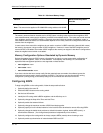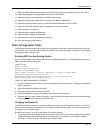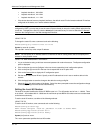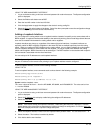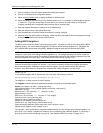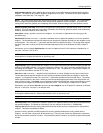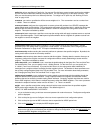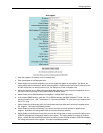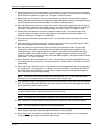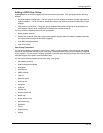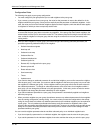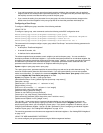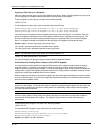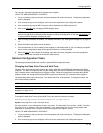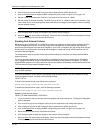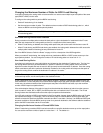
Advanced Configuration and Management Guide
10. Select Enable next to Client To Client Reflection if this neighbor is a route-reflector client of the routing switch.
Use the parameter only if this routing switch is going to be a route reflector. For information, see “Configuring
Route Reflection Parameters” on page 10-33. This option is disabled by default.
11. Select Enable next to Shutdown if you want to administratively shut down the session with this neighbor.
Shutting down the session allows you to completely configure the neighbor and save the configuration without
actually establishing a session with the neighbor. This option is disabled by default.
12. Enter the advertisement interval in the Advert Interval field. This parameter specifies the minimum delay (in
seconds) between messages to the specified neighbor. The default is 30 for EBGP neighbors (neighbors in
other ASs). The default is 5 for IBGP neighbors (neighbors in the same AS). The range is 0 – 600.
13. Edit the value in the Maximum Prefix field to change the maximum prefix. The maximum prefix is the
maximum number of IP network prefixes (routes) that can be learned from the specified neighbor. The
default is 0 (unlimited). The range is 0 – 4294967295.
14. Enter the remote AS number in the Remote AS field. The remote AS number is the number of the AS the
neighbor is in.
15. Enter the weight you want the routing switch to add to routes received from the specified neighbor. BGP4
prefers larger weights over smaller weights. The default weight is 0.
16. Enter the number of an update source loopback interface in the Update Source field. This parameter
configures the routing switch to communicate with the neighbor through the loopback address on the
specified interface. Using a loopback address for neighbor communication avoids problems that can be
caused by unstable routing switch interfaces. Generally, loopback interfaces are used for links to IBGP
neighbors, which often are multiple hops away, rather than EBGP neighbors. The loopback interface number
can be from 1 – 8. There is no default.
17. Enter a Keep Alive time in the Keep Alive Time field. This parameter overrides the global BGP4 Keep Alive
Time configured on the routing switch. You can specify from 0 – 65535 seconds. The default is the current
global setting.
18. Enter a Hold Time in the Hold Time field. This parameter overrides the global BGP4 Hold Time configured on
the routing switch. You can specify 0 or 3 – 65535 (1 and 2 are not allowed). If you set the Hold Time to 0,
the routing switch waits indefinitely for messages from a neighbor without concluding that the neighbor is
dead. The default is the current global setting.
NOTE: Set the Hold Time to three times the value of the Keep Alive Time. For information about these
parameters, see
“Changing the Keep Alive Time and Hold Time” on page 10-23.
19. If you specified a weight in the Weight field, enter a list of AS Path filters in the AS Path Filter List for Weight
field. The routing switch applies the filters in the order in which you list them and stops applying the filters in
the AS-path filter list when a match is found.
NOTE: By default, if an AS-path does not match any of the filters, the routing switch denies the route. To
change the default behavior, configure the last filter as “permit any any”.
NOTE: The AS-path filter must already be configured. See “Filtering AS-Paths” on page 10-46.
20. Enter a password in the MD5 Password field to secure the routing switch’s sessions with this neighbor.
NOTE: You must configure the neighbor to use the same password.
21. Click the Add button (if you are adding a new neighbor) or the Modify button (if you are modifying a neighbor
that is already configured) to apply the changes to the device’s running-config file.
22. Select the Save
link at the bottom of the dialog, then select Yes when prompted to save the configuration
change to the startup-config file on the device’s flash memory.
10 - 18



